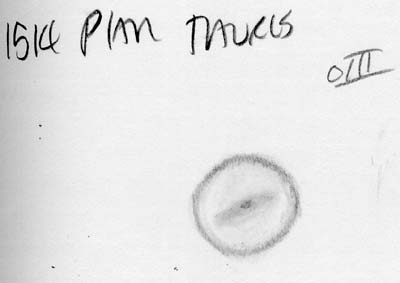
William Herschel discovered this planetary nebula on November 13, 1790. The appearance of this object caused him to rethink his idea of planetary nebulae; he had formerly assumed that all nebulae are unresolved stellar agglomerations of some kind. He describes it in a paper, "On Nebulous Stars, Properly So Called", published in the Philosophical Transactions for 1791, as follows:
A most singular phenomenon! A star of about 8th magnitude with a faint luminous atmosphere, of circular form, and about 3 minutes in diameter. The star is perfectly in the center and the atmosphere is so delicate, faint and equally throughout that there can be no surmise of its consisting of stars; nor can there be a doubt of the evident connection between the atmosphere and the star. Another star, not much less in brightness and in the same field as the above, was perfectly free from any such appearance.
Observed at 240X using the 100mm (4-inch diameter) Masiama Kellner eyepiece and 400x using the 4-inch diameter 60mm Erfle. To see the halo, we held a OIII filter between the eyepiece and our eye.

White Oaks Home | Sketches Index | Back | Next